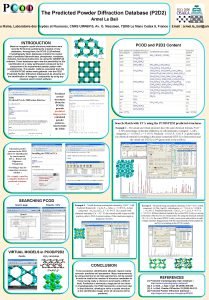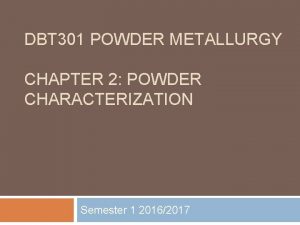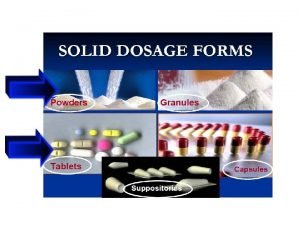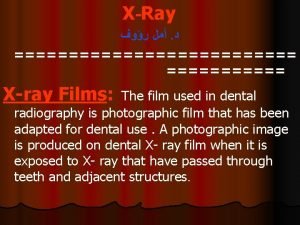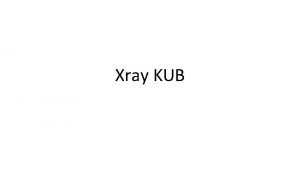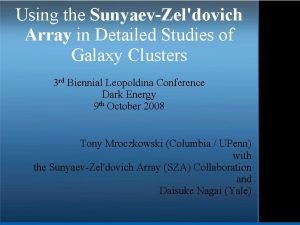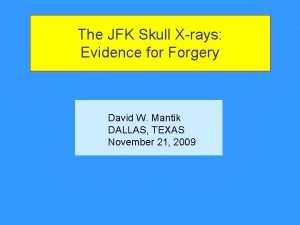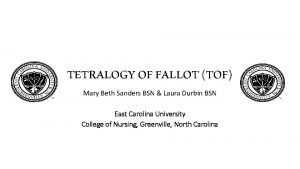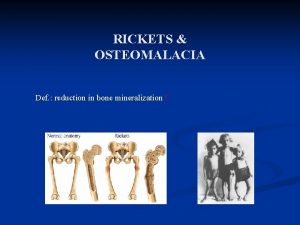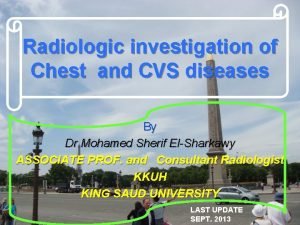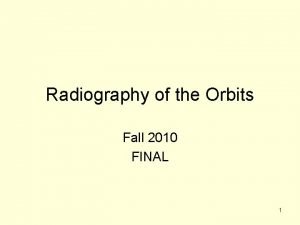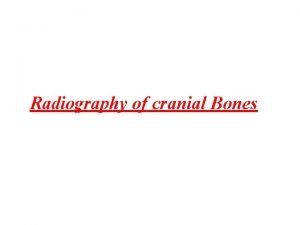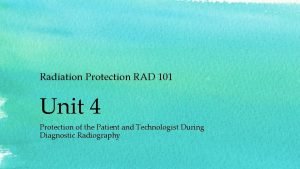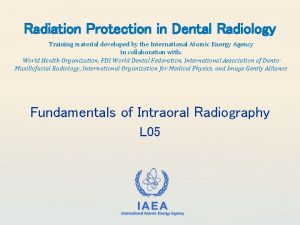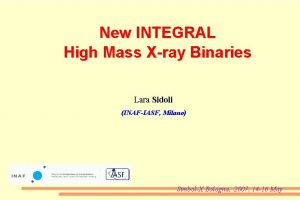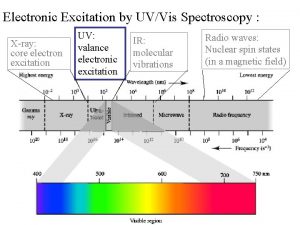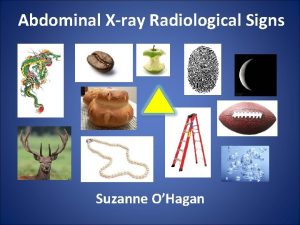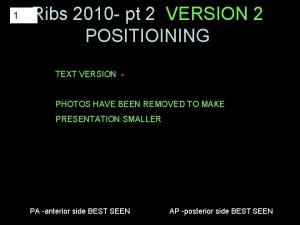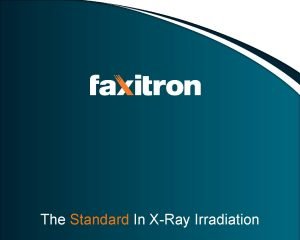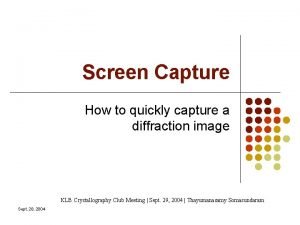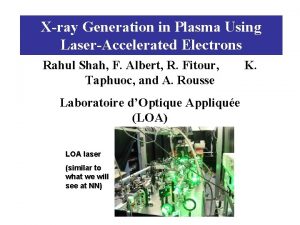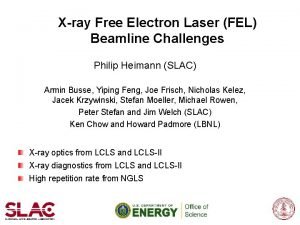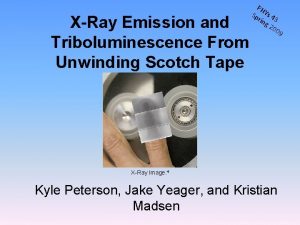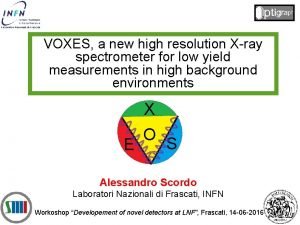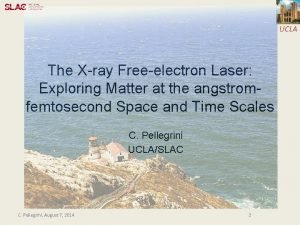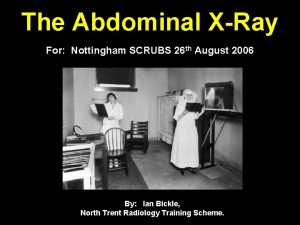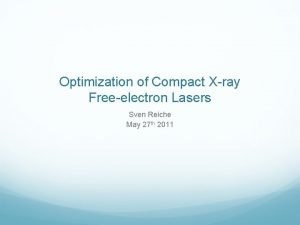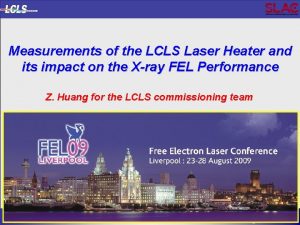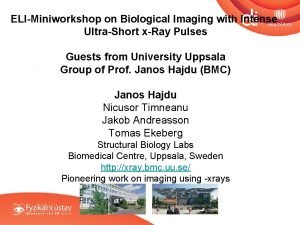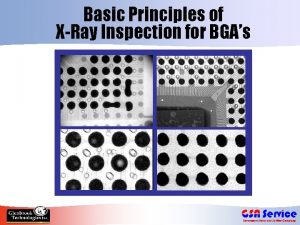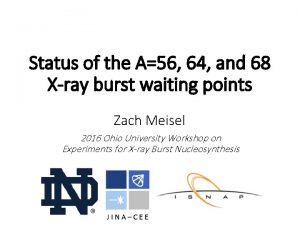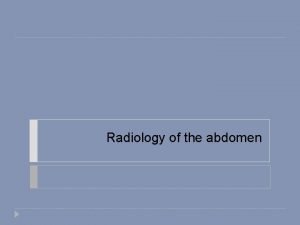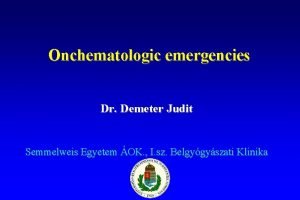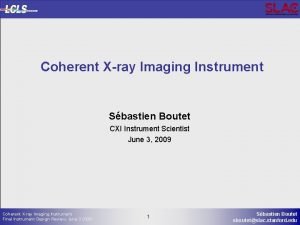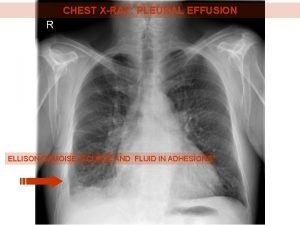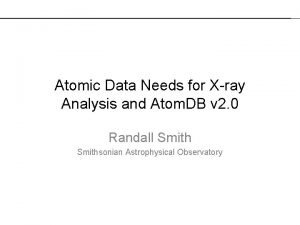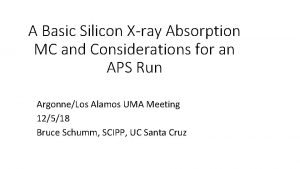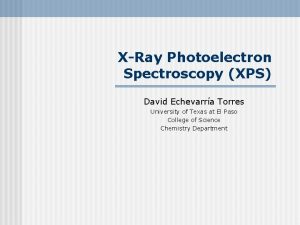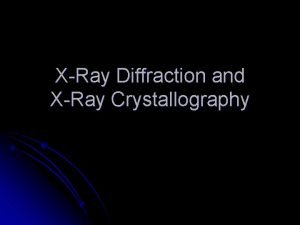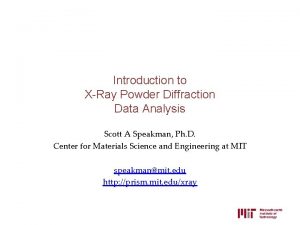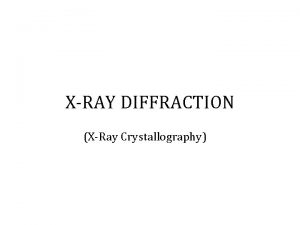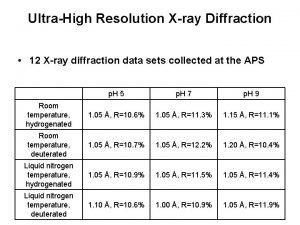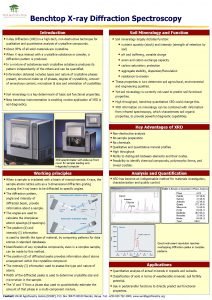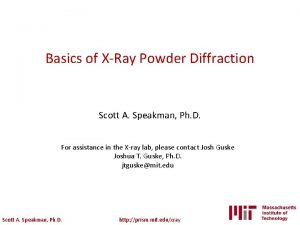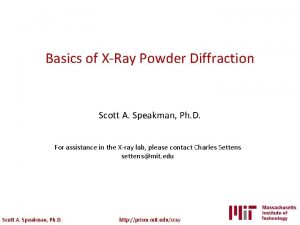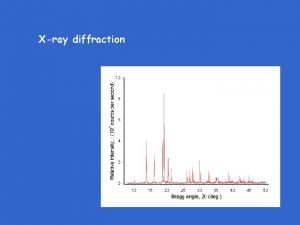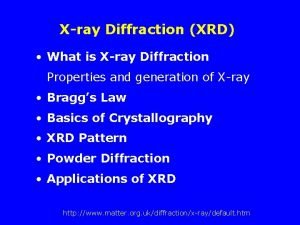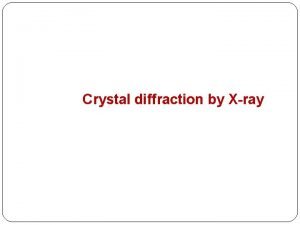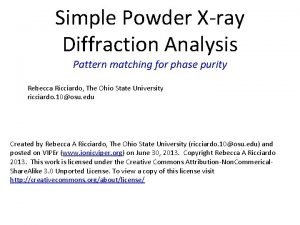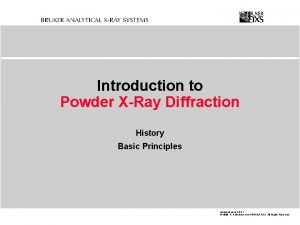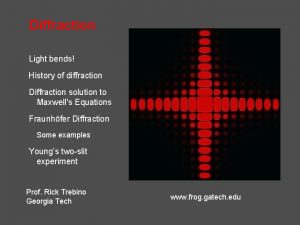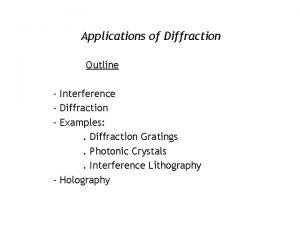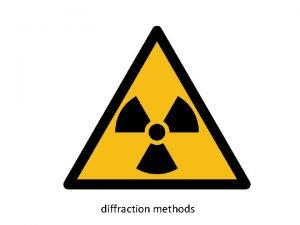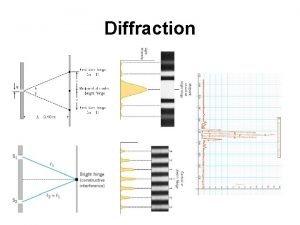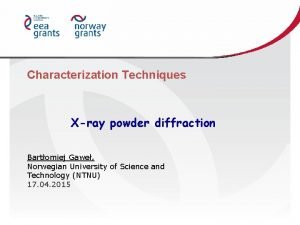Introduction to XRay Powder Diffraction Data Analysis Scott























































- Slides: 55

Introduction to X-Ray Powder Diffraction Data Analysis Scott A Speakman, Ph. D. Center for Materials Science and Engineering at MIT speakman@mit. edu http: //prism. mit. edu/xray

An X-ray diffraction pattern is a plot of the intensity of X-rays scattered at different angles by a sample X-ray tube The detector moves in a circle around the sample – The detector position is recorded as the angle 2 theta (2θ) – The detector records the number of X-rays observed at each angle 2θ – The X-ray intensity is usually recorded as “counts” or as “counts per second” • To keep the X-ray beam properly focused, the sample will also rotate. – On some instruments, the X-ray tube may rotate instead of the sample. tor c e et D w sample Intensity (Counts) • 2 q 10000 5000 0 35 40 45 50 55 Position [° 2 Theta] (Cu K-alpha) Slide ‹#› of 20 Scott A Speakman, Ph. D. speakman@mit. edu

Each “phase” produces a unique diffraction pattern Quartz Cristobalite Glass 15 20 25 30 35 40 • A phase is a specific chemistry and atomic arrangement. • Quartz, cristobalite, and glass are all different phases of Si. O 2 – They are chemically identical, but the atoms are arranged differently. – As shown, the X-ray diffraction pattern is distinct for each different phase. – Amorphous materials, like glass, do not produce sharp diffraction peaks. Position [° 2 Theta] (Cu K-alpha) The X-ray diffraction pattern is a fingerprint that lets you figure out what is in your sample. Scott A Speakman, Ph. D. Slide ‹#› of 20 speakman@mit. edu

The diffraction pattern of a mixture is a simple sum of the diffraction patterns of each individual phase. Quartz Mixture Cristobalite Glass 0 15 20 25 30 35 Position [° 2 Theta] (Cu K-alpha) 40 15 20 25 30 35 Position [° 2 Theta] (Copper (Cu)) • From the XRD pattern you can determine: – What crystalline phases are in a mixture – How much of each crystalline phase is in the mixture (quantitative phase analysis, QPA, is covered in another tutorial) – If any amorphous material is present in the mixture Slide ‹#› of 20 Scott A Speakman, Ph. D. speakman@mit. edu 40

Qualitative Analysis of XRD Data Slide ‹#› of 20 Scott A Speakman, Ph. D. speakman@mit. edu

Experimental XRD data are compared to reference patterns to determine what phases are present • • The reference patterns are represented by sticks The position and intensity of the reference sticks should match the data – A small amount of mismatch in peak position and intensity is acceptable experimental error Slide ‹#› of 20 Scott A Speakman, Ph. D. speakman@mit. edu

Specimen Displacement Error will cause a small amount of error in peak positions Peaks that are close together should be shifted the same direction and by the same amount The peak shift follows a cosθ behavior, so peak shift might change direction over a large angular range • Slide ‹#› of 20 Scott A Speakman, Ph. D. speakman@mit. edu

Most diffraction data contain K-alpha 1 and Kalpha 2 peak doublets rather than just single peaks K-alpha 1 K-alpha 2 • • • K-alpha 1 K-alpha 2 The k-alpha 1 and k-alpha 2 peak doublets are further apart at higher angles 2 theta The k-alpha 1 peaks always as twice the intensity of the k-alpha 2 At low angles 2 theta, you might not observe a distinct second peak Slide ‹#› of 20 Scott A Speakman, Ph. D. speakman@mit. edu

The experimental data should contain all major peaks listed in the reference pattern If a major reference peak is not observed in the data, then that is not a good match Minor reference peaks could be lost in the background noise, so it may be acceptable if they are not observed This is an example of a bad match between the data and the reference pattern Slide ‹#› of 20 Scott A Speakman, Ph. D. speakman@mit. edu

The X-ray diffraction pattern is a sum of the diffraction patterns produced by each phase in a mixture Each different phase produces a different combination of peaks. Slide ‹#› of 20 Scott A Speakman, Ph. D. speakman@mit. edu

You cannot guess the relative amounts of phases based upon the relative intensities of the diffraction peaks • • The pattern shown above contains equal amounts of Ti. O 2 and Al 2 O 3 The Ti. O 2 pattern is more intense because Ti. O 2 diffracts X-rays more efficiently With proper calibration, you can calculate the amount of each phase present in the sample Scott A Speakman, Ph. D. Slide ‹#› of 20 speakman@mit. edu

Diffraction peak broadening may contain information about the sample microstructure • Peak broadening may indicate: • However, different instrument configurations can change the peak width, too – Smaller crystallite size in nanocrystalline materials – More stacking faults, microstrain, and other defects in the crystal structure – An inhomogeneous composition in a solid solution or alloy These patterns show the difference between bulk ceria (blue) and nanocrystalline ceria (red) These patterns show the difference between the exact same sample run on two different instruments. When evaluating peak broadening, the instrument profile must be considered. Slide ‹#› of 20 Scott A Speakman, Ph. D. speakman@mit. edu

Quantitative Analysis of XRD Data Slide ‹#› of 20 Scott A Speakman, Ph. D. speakman@mit. edu

Diffraction peak positions can be used to calculated unit cell dimensions 24. 179 deg d= 3. 6779 Å 25. 321 deg d= 3. 5145 Å • The unit cell dimensions can be correlated to interatomic distances • Anything the changes interatomic distances- temperature, subsitutional doping, stress- will be reflected by a change in peak positions Slide ‹#› of 20 Scott A Speakman, Ph. D. speakman@mit. edu

To calculate unit cell lattice parameters from the diffraction peak positions • Convert the observed peak positions, ° 2 theta, into dhkl values using Bragg’s Law: • Determine the Miller indices (hkl) of the diffraction peaks from the published reference pattern – If you do not have access to a reference pattern that identifies (hkl) then you will need to index the pattern to determine the (hkl) • Use the d*2 equation to calculate the lattice parameters – Most analysis programs contain an unit cell refinement algorithm for numerically solving the lattice parameters – These programs can also calculate and correct for peak position error due to specimen displacement Slide ‹#› of 20 Scott A Speakman, Ph. D. speakman@mit. edu

The diffraction peak width may contain microstructural information Width=0. 002 rad XS> 90 nm • Width=0. 007 rad XS ~ 19 nm Nanocrystallite size will produce peak broadening that can be quantified – Once the crystallite size is larger than a maximum limit, the peak broadening cannot be quantified. This creates an upper limit to the crystallite size that can be calculated. The upper limit depends on the resolution of the diffractometer. • • – Non-uniform lattice strain and defects will also cause peak broadening Careful evaluation is required to separate all of the different potential causes of peak broadening Slide ‹#› of 20 Scott A Speakman, Ph. D. speakman@mit. edu

The weight fraction of each phase can be calculated if the calibration constant is known • The calibration constants can be determined: – By empirical measurements from known standards – By calculating them from published reference intensity ratio (RIR) values – By calculating them with Rietveld refinement Slide ‹#› of 20 Scott A Speakman, Ph. D. speakman@mit. edu

All calculations are more accurate if you use more peaks over a longer angular range • If you use one or two peaks, you must assume: • If you use many peaks over a long angular range (for example, 7+ peaks over a 60° 2 theta range), you can: – That there is no specimen displacement error when calculating lattice parameters – That there is no microstrain broadening when calculating crystallite size – Calculate and correct for specimen displacement when solving lattice parameters – Calculate and account for microstrain broadening when calculating crystallite size – Improve precision by one or two orders of magnitude Slide ‹#› of 20 Scott A Speakman, Ph. D. speakman@mit. edu

There are different ways to extract peak information for quantitative analysis • Numerical methods reduce the diffraction data to a list of discrete diffraction peaks – The peak list records the position, intensity, width and shape of each diffraction peak – Calculations must be executed based on the peak list to produce information about the sample • Full pattern fitting methods refine a model of the sample – A diffraction pattern is calculated from a model – The calculated and experimental diffraction patterns are compared – The model is refined until the differences between the observed and calculated patterns are minimized. – The Rietveld, Le. Bail, and Pawley fitting methods use different models to produce the calculated pattern Slide ‹#› of 20 Scott A Speakman, Ph. D. speakman@mit. edu

A peak list for empirical analysis can be generated in different ways • The diffraction data are reduced to a list of diffraction peaks • Peak search – Analysis of the second derivative of diffraction data is used to identify likely diffraction peaks – Peak information is extracted by fitting a parabola around a minimum in the second derivative – This method is fast but the peak information lacks precision • Profile fitting – – Each diffraction peak is fit independently with an equation The sum of the profile fits recreates the experimental data Peak information is extracted from the profile fit equation This method provides the most precise peak information Slide ‹#› of 20 Scott A Speakman, Ph. D. speakman@mit. edu

Profile Fitting produces precise peak positions, widths, heights, and areas with statistically valid estimates • Empirically fit experimental data with a series of equations Intensity (a. u. ) – fit the diffraction peak using the profile function • The profile function models the mixture of Gaussian and Lorentzian shapes that are typical of diffraction data – fit background, usually as a polynomial function • this helps to separate intensity in peak tails from background • 28. 5 29. 0 2 q (deg. ) To extract information, operate explicitly on the equation rather than numerically on the raw data Slide ‹#› of 20 Scott A Speakman, Ph. D. speakman@mit. edu 29. 5 30. 0

Diffraction peak lists are best reported using dhkl and relative intensity rather than 2 q and absolute intensity. • The peak position as 2 q depends on instrumental characteristics such as wavelength. – The peak position as dhkl is an intrinsic, instrument-independent, material property. • Bragg’s Law is used to convert observed 2 q positions to dhkl. • The absolute intensity, i. e. the number of X rays observed in a given peak, can vary due to instrumental and experimental parameters. – The relative intensities of the diffraction peaks should be instrument independent. • To calculate relative intensity, divide the absolute intensity of every peak by the absolute intensity of the most intense peak, and then convert to a percentage. The most intense peak of a phase is therefore always called the “ 100% peak”. – Peak areas are much more reliable than peak heights as a measure of intensity. Slide ‹#› of 20 Scott A Speakman, Ph. D. speakman@mit. edu

Calculations must be executed on the peak list to yield any information about the sample • This peak list itself does not tell you anything about the sample – Additional analysis must be done on the peak list to extract information • From the peak list you can determine: – Phase composition: by comparison to a database of reference patterns – Semi-quantitative phase composition: calculated from peak intensities for different phases – Unit cell lattice parameters: calculated from peak positions – Crystal system: determined by indexing observed peaks and systematic absences – Crystallite size and microstrain: calculated from peak widths and/or shapes – A number of engineering indexes are also calculated from peak list information Slide ‹#› of 20 Scott A Speakman, Ph. D. speakman@mit. edu

Full pattern fitting methods use different models to produce a calculated pattern • The Rietveld method uses fundamental calculations from crystal structure models to produce the calculated diffraction pattern – Analysis produces a refined crystal structure model for all phases in the sample • Peak positions and intensities are constrained by the crystal structure model – Crystallite size, microstrain, and preferred orientation can be extracted from empirical models included in the refinement • Le-Bail and Pawley fitting methods use unit cell models combined with empirical fitting of peak intensities – Analysis produces a refined unit cell model but does not immediate yield information about parameters related to peak intensities Slide ‹#› of 20 Scott A Speakman, Ph. D. speakman@mit. edu

Other analytical methods • Total scattering methods (whole pattern fitting) attempts to model the entire diffraction pattern from first principal calculations – Calculations include • Bragg diffraction peaks, • diffuse scatter contributions to background, • peak shapes based on diffractometer optics, • peak shapes based on crystallite size, shape, defects, and microstrain • Pair distribution functional analysis uses Fourier analysis to produce an atomic pair density map – Can yield atomic structure information about non-crystalline, semi-crystalline, and highly disordered materials Slide ‹#› of 20 Scott A Speakman, Ph. D. speakman@mit. edu

Examples of Data Analysis Slide ‹#› of 20 Scott A Speakman, Ph. D. speakman@mit. edu

Pb. Ti. O 3 transforms from tetragonal to cubic crystal systems at elevated temperatures Low temperature High temperature Slide ‹#› of 20 Scott A Speakman, Ph. D. speakman@mit. edu

In situ XRD identifies the Pb. Ti. O 3 transformation from tetragonal to cubic between 475 and 480 °C XRD data can be used to calculate the lattice parameters and solve the crystal structure at each temperature. Slide ‹#› of 20 Scott A Speakman, Ph. D. speakman@mit. edu

In situ X-Ray Studies of Ti-doped Sodium Alanate Scott A Speakman, MIT Joachim H Schneibel, Dewey S Easton, ORNL Tabbetha A Dobbins, Louisiana Tech Univeristy Roland Tittsworth, CAMD Slide ‹#› of 20 Scott A Speakman, Ph. D. speakman@mit. edu

Sodium alanate was one of the first complex hydrides with reversible desorption/resorption of H 2 • Sodium alanate (Na. Al. H 4) is doped with 2 wt% Ti. Cl 3 – Enhances desorption kinetics – Produces reversible absorption • Na. Al. H 4 cannot meet requirements for a hydrogen storage material – Acceptable energy density – Poor specific energy (5. 6 wt% H 2 not including system weight) – Has some problems with maintaining reversibility after repeated cycling

XRD data were collected quickly to quantify the change in phase composition with time Na 3 Al. H 6 Al Na. Cl Na. Al. H 4 • Data over a 60 ° 2θ range collected in 5 min increments • Over 100 patterns per experiment • Phase quantities were calculated using batched Rietveld analysis

The change in phase fractions with time were used to calculate the reaction rate constants • from PCI – k 1 = 44 x 10 -4 s-1 – k 2 = 21 x 10 -5 s-1 k 2 (10 -4 s-1) (10 -5 s-1) XRD Avg. 3. 8 0. 94 Na. Al. H 4 3. 7 - Na 3 Al. H 6 3. 2 0. 76 Al 4. 4 1. 6 - 0. 41 Na. H

Coarsening of Ce. O 2 nanoparticles Brian Neltner, Brian Peddie, Alex Xu, William Doenlen, Keith Durand, Dong Soo Yun, Scott Speakman, Andrew Peterson, Angela Belcher, “Production of Hydrogen Using Nanocrystalline Protein-Templated Catalysts on M 13 Phage, ” ACS Nano 4 [6] 2010. Brian Neltner, Scott Speakman, Dong Soo Yun, Angela Belcher, “Time resolved nanocrystalline growth of cerium oxide and lanthanum-doped cerium oxide using X-Ray diffraction– unusually low nanocrystalline growth” pending publication Slide ‹#› of 20 Scott A Speakman, Ph. D. speakman@mit. edu

Ceria nanoparticles used as catalysts are limited by their tendency to coarsen at high temperatures • Ceria is used as a catalyst for steam reforming of ethanolwater mixtures to produce H 2 – Rh with Ni on Ce. O 2 is used to enhance the conversion at low temperatures • By using very small nanocrystalline Ce. O 2, 100% conversion could be achieved at 300 °C. • Biological templating on M 13 bacteriophage was demonstrated to improve the resistance of the catalyst to deactivation. • This is one example of how Prof Belcher is using biological templating and surface treatments to improve the stability of nanocrystalline catalysts • The examples shown within actual combine a few different studies, including some using a different stabilization technique. Some data have been ‘enhanced’ for teaching purposes- see cited publications for authentic findings. Slide ‹#› of 20 Scott A Speakman, Ph. D. speakman@mit. edu

Ex-situ XRD can be used to determine what samples will show the most and least amount of grain growth • When screening techniques to inhibit grain growth of nanocrystalline catalysts: – Take 20 prospective samples plus a few control samples – Heat in a furnace at the target temperature for a few hours – Use XRD data collected at normal (standard temperature) conditions to determine how much the grain size changed for each sample • In-situ XRD is most useful to determine the kinetics and mechanism of grain growth by using timeresolved data collection at various different temperatures Slide ‹#› of 20 Scott A Speakman, Ph. D. speakman@mit. edu

First HTXRD experiments revealed that nanoparticles tend to sinter, creating large displacement errors Slide ‹#› of 20 Scott A Speakman, Ph. D. speakman@mit. edu

Nanopowder was pressed into a pellet to provide a more dense starting piece that densified less • Pellets pressed with excessive pressure had a tendency to warp during data collection • Lightly pressed pellets still densified but created less displacement error • Analysis of densified pellets determined that the displacement error did not affect crystallite size analysis Slide ‹#› of 20 Scott A Speakman, Ph. D. speakman@mit. edu

Careful analysis of a sample before and after was used to optimize data collection • Williamson-Hall analysis of a sample before and after heat treatment indicated that there was no microstrain After heat treatment, size analysis was done on the densified pellet with specimen displacement error. The sample was ground and prepared as an ‘ideal’ powder sample. – Both data sets produced the same crystallite size 0. 035 B cos (theta) • 0. 04 0. 03 0. 025 0. 02 0. 015 Pristine Densified Pellet Heated and Ground 0. 01 0. 005 0 0 0. 2 0. 4 0. 6 0. 8 sin (theta) Williamson-Hall (220) Peak Pristine 50 50 Densified Pellet 79 78 Heated then Ground 84 73 This optimization and validation allowed us to reduce scan times to 1 minute. Slide ‹#› of 20 Scott A Speakman, Ph. D. speakman@mit. edu 1

Scans were collected in 1 minute intervals at 450, 500, and 550 °C for ~2 hours 450 °C Slide ‹#› of 20 550 °C Scott A Speakman, Ph. D. speakman@mit. edu

The first scan at different temperatures was different because of grain growth that occurred during heating 470 Pristine Sample First Scan at 450 °C First Scan at 500 °C First Scan at 550 °C Programmed Aggressive PID Setting Conservative PID Setting 450 430 50 • • • Slide ‹#› of 20 55 60 65 70 The furnace ramp rate slows as it approaches the setpoint. We changed the software configuration so that the first scan began when the temperature was within 10 °C of the setpoint Since we know the starting size and the rate of change at temperature, the grain growth during heating is only a small source of error. Scott A Speakman, Ph. D. speakman@mit. edu

In-situ XRD was used to evaluate the effectiveness of different ways to hinder crystallite growth Slide ‹#› of 20 Scott A Speakman, Ph. D. speakman@mit. edu

Observed crystal growth at different temperatures were used to model the kinetics • 550 °C 500 °C 450 °C Slide ‹#› of 20 Scott A Speakman, Ph. D. speakman@mit. edu

This analysis allowed the identification of the most efficient ways to passivate the Ceria surface and hinder grain growth Growth exponent Untreated Ce. O 2 3. 3 Final crystallite size 18 nm Most effective treatment 11 7 nm • The starting crystallite size was 2 nm – In 2+ hours at 550 C, the treated sample grew much less than the untreated sample. • A typical growth exponent is 3 • Results of in-situ XRD, combined with XPS and TEM, indicated that oxygen vacancies created in the surface of nanoparticles was one mechanism that reduced crystallite growth at high temperatures Slide ‹#› of 20 Scott A Speakman, Ph. D. speakman@mit. edu

Scintillator Materials for Medical Imaging: Thermal expansion and stability of Ce: LSO Merry A Spurrier, Chuck L Melcher CTI Molecular Imaging Inc. Camden R Hubbard, Larry F Allard, Wally D Porter Oak Ridge National Laboratory

Ce-doped Lu 2 Si. O 5 (Ce: LSO) is the current state-ofthe-art scintillator crystal in PET scanners • Ce: LSO is a good scintillator crystal – good detection efficiency, high light output, short decay time, high density and atomic number – These lead to faster measurements and greater resolution. • Boules of LSO single crystals are grown using the Czochralski method. – N 2 gas environment to prevent oxidation of Ir crucible. • Some as-grown crystals have low light output. – This can often be remedied with an annealing procedure. • Some crystals crack as they cool from the melt.

The thermal expansion of LSO is highly anisotropic. • In-situ XRD and push-rod dilatometry were used to measure thermal expansion of several different LSO samples. 1250 00 -0001> Lu 2 Si. O 5 - Lu 2 Si. O 5 1000 Intensity(Counts) 750 500 250 0 20 21 22 23 24 25 26 27 2 -Theta(°) • • • Thermal expansion along the b and c axes are 4 to 5 times greater than that along the a axis. The thermal expansion of each axis is well fit by a 2 nd order polynomial. No difference in crystal structure or CTE of high and low light output samples.

In low oxygen environments, Si volatilizes out of Lu 2 Si. O 5. • Lu 2 Si. O 5 decomposes into Lu 2 O 3 in oxygen-poor atmospheres. • In a vacuum or gettered Ar environment (<1 ppm O 2), Lu 2 Si. O 5 decomposes at a temperature between 1350 and 1420 °C. – As Lu 2 O 3 forms, no evidence of Si or Si. O 2 is observed – LSO is stable in air up to these temperatures • At 1500 °C in vacuum, decomposition begins after 30 minutes. – The formation of Lu 2 O 3 slows significantly after 9 hours. • An oxygen level between 100 and 150 ppm O 2 stabilizes LSO up to 1760 °C. – Begins decomposing slowly between 1760 and 1850 °C.

On-going work • Investigating phase transformations, or lack thereof, in (Lu 1 -x. Yx)2 Si. O 5 • Searching for light quenching impurities in Lu. Al. O 3 crystals • Explore the decomposition of Lu. Al. O 3 into Lu 2 Al 4 O 9 during crystal growth • Develop nanocrystalline scintillator particles in transparent ceramics

Thermal Stability of Pb. Se Quantum Dots Tad Sudnick, Tamar Mentzel, Scott Speakman Slide ‹#› of 20 Scott A Speakman, Ph. D. speakman@mit. edu

HTXRD was used to evaluate thermal stability of quantum dot nanostructures • Quantum dots were made from spherical nanoclusters of Pb. Se • Ligands were used to help the quantum dots self-assemble into orderly close-packed hexagonal arrays • The nanostructured film of quantum dots is a photoconductor with potential use as a detector or other electro-optic device • The ordered nanostructure produces a diffraction pattern Slide ‹#› of 20 Scott A Speakman, Ph. D. speakman@mit. edu

-0. 1 mm shift -0. 01 mm shift optimal height 0. 03 mm shift 0. 18 mm shift 22500 10000 2500 1 1. 50 2 2. 50 Position [° 2 Theta] (Cu) Slide ‹#› of 20 3 3. 50 Sample displacement due to thermal expansion of sample holder (mm) Optimizing the experiment: determining how much sample displacement will affect the data quality 0. 35 Measured 0. 3 Published 0. 25 0. 2 0. 15 0. 1 0. 05 0 0 400 800 Temperature (°C) Scott A Speakman, Ph. D. speakman@mit. edu

The measurement was planned to study temperature stability with very limited instrument time 200 180 Temperature (°C) 160 140 4 scans over the course of 1 hr 120 100 80 1 scan upon reaching temperature and one scan 20 minutes later 60 40 20 0 0 Slide ‹#› of 20 20 40 60 80 100 Time (min) 120 Scott A Speakman, Ph. D. speakman@mit. edu 140 160

The scans collected at different temperatures show the ordered nanostructure collapses upon heating pristine after heating Confocal microscopy used to confirm XRD results. Slide ‹#› of 20 Scott A Speakman, Ph. D. speakman@mit. edu

Time resolved data shows that most changes occur very rapidly once sample reaches temperature at 120 C after 20 min Pristine at 25 C 100 C after 15 min 100 C after 30 min 100 C after 45 min at 135 C after 20 min Slide ‹#› of 20 Scott A Speakman, Ph. D. speakman@mit. edu

http: //prism. mit. edu/xray Slide ‹#› of 20 Scott A Speakman, Ph. D. speakman@mit. edu
 Powder diffraction database
Powder diffraction database Divided powder definition
Divided powder definition Examples of granules drugs
Examples of granules drugs Powder characterization in powder metallurgy
Powder characterization in powder metallurgy Finely divided, bulk effervescent
Finely divided, bulk effervescent Sujan chhetri
Sujan chhetri The purpose of a lead foil sheet in the film packet is
The purpose of a lead foil sheet in the film packet is Plain film kub
Plain film kub Xray xml editor
Xray xml editor Sza xray
Sza xray Jfk xray
Jfk xray Pink tof vs blue tof
Pink tof vs blue tof Rickets def
Rickets def Cvs xray
Cvs xray Rhese method orbits positioning
Rhese method orbits positioning Skull and wings
Skull and wings Xray technique chart
Xray technique chart Bitewing periapical
Bitewing periapical Falling load generator x ray
Falling load generator x ray Xray lara
Xray lara Double exposure xray
Double exposure xray Spectrum xray
Spectrum xray Murmur in asd
Murmur in asd Signo rigler
Signo rigler Noi toi poi doi meaning
Noi toi poi doi meaning Oblique ribs xray
Oblique ribs xray Xray file cabinet
Xray file cabinet Gimp xray
Gimp xray Darkroom entrance
Darkroom entrance Hampton hump xray
Hampton hump xray First xray ever taken
First xray ever taken Xray neck lateral view
Xray neck lateral view Xray laser
Xray laser Xray laser
Xray laser Triboluminescence x ray
Triboluminescence x ray Xray laser
Xray laser Xray spectrometer
Xray spectrometer Xray laser
Xray laser Xray laser
Xray laser X ray scrubs
X ray scrubs Xray laser
Xray laser Xray laser
Xray laser Xray laser
Xray laser Bga xray
Bga xray Acanthion face
Acanthion face Peter mueller mit
Peter mueller mit 68 xray
68 xray Thumbprinting on xray
Thumbprinting on xray Dr demeter judit
Dr demeter judit Facial bone xray
Facial bone xray Picker xray
Picker xray Percutaneous nephrostomy
Percutaneous nephrostomy Atom xray
Atom xray Silicon valley xray
Silicon valley xray Xray photoelectron spectroscopy
Xray photoelectron spectroscopy Who discovered xray
Who discovered xray
